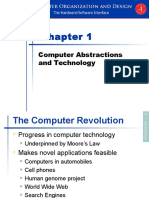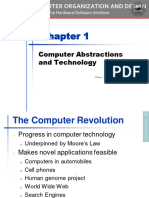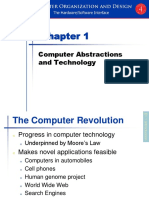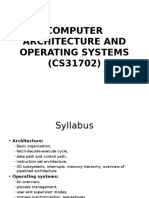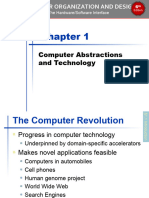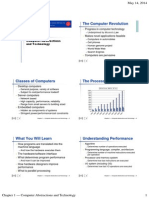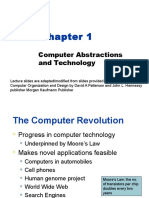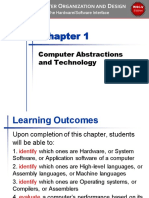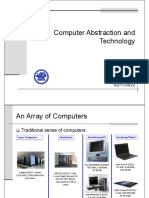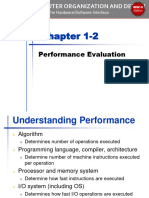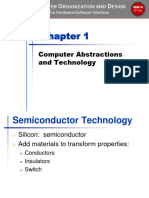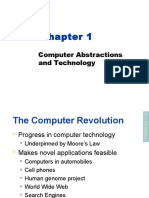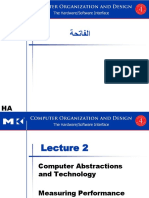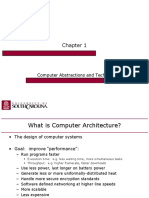0% found this document useful (0 votes)
111 views39 pagesChapter 1 Computer Abstractions and Technology
The document discusses computer organization and design. It covers topics like computer abstractions, the components of a computer, processor performance, and measuring execution time. The document contains detailed information and examples related to computer hardware and software.
Uploaded by
q qqCopyright
© © All Rights Reserved
We take content rights seriously. If you suspect this is your content, claim it here.
Available Formats
Download as PDF, TXT or read online on Scribd
0% found this document useful (0 votes)
111 views39 pagesChapter 1 Computer Abstractions and Technology
The document discusses computer organization and design. It covers topics like computer abstractions, the components of a computer, processor performance, and measuring execution time. The document contains detailed information and examples related to computer hardware and software.
Uploaded by
q qqCopyright
© © All Rights Reserved
We take content rights seriously. If you suspect this is your content, claim it here.
Available Formats
Download as PDF, TXT or read online on Scribd
/ 39



